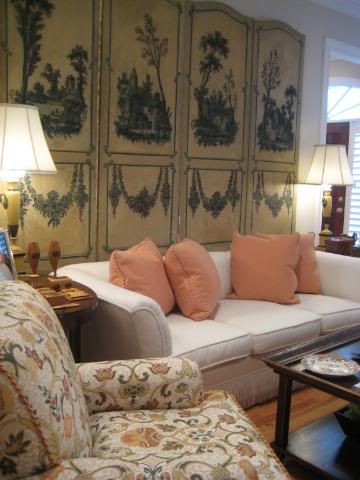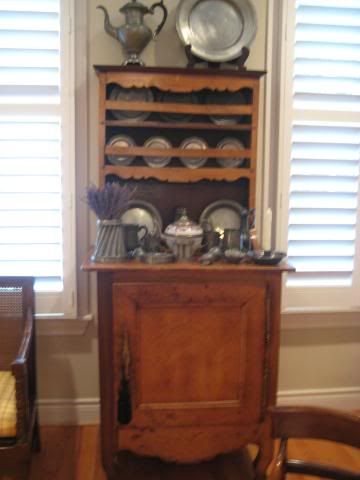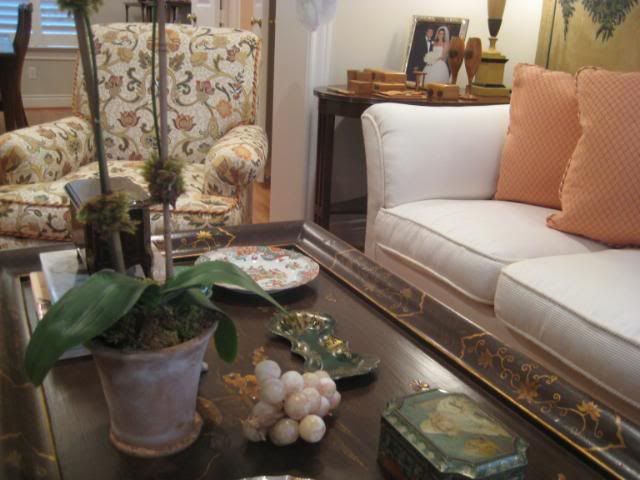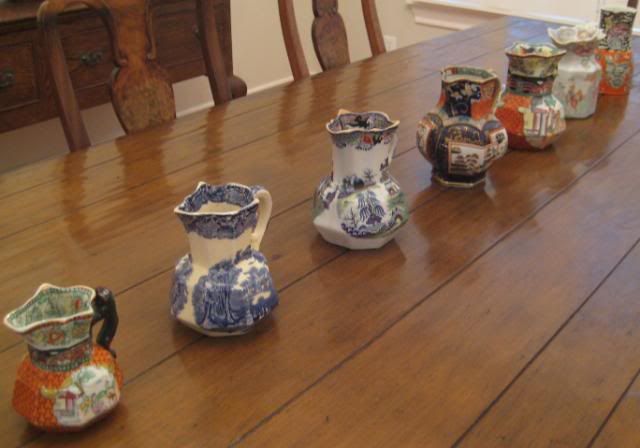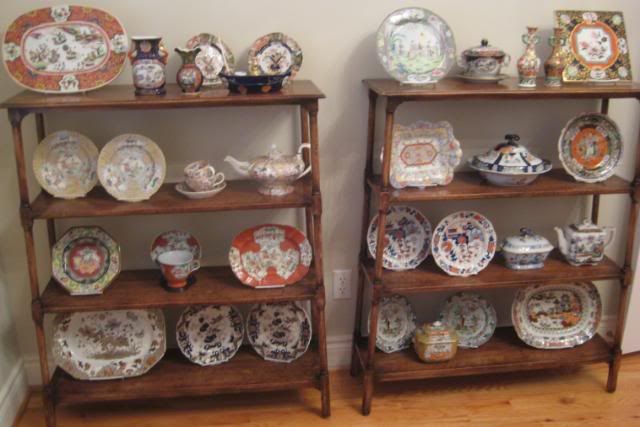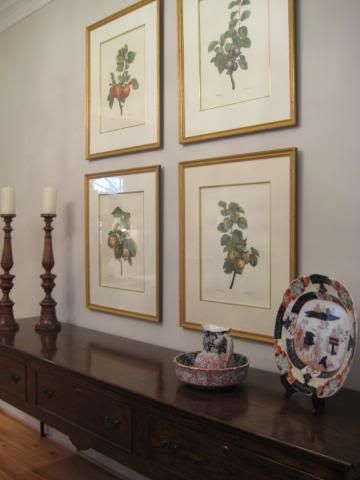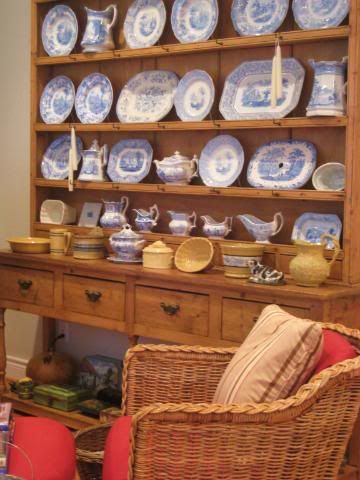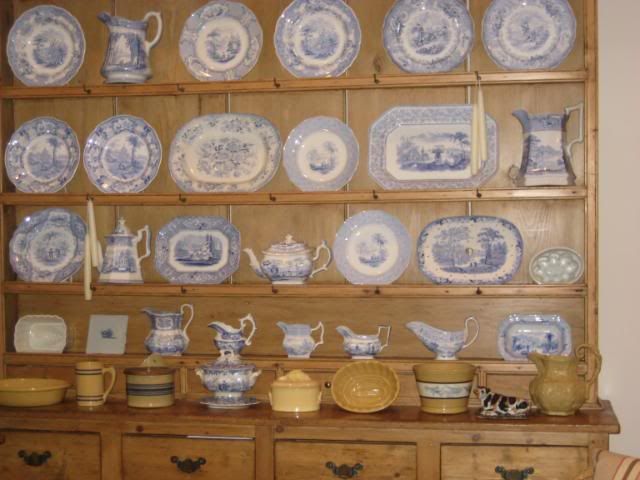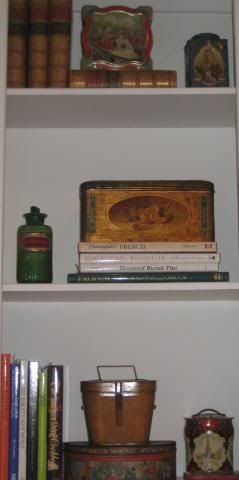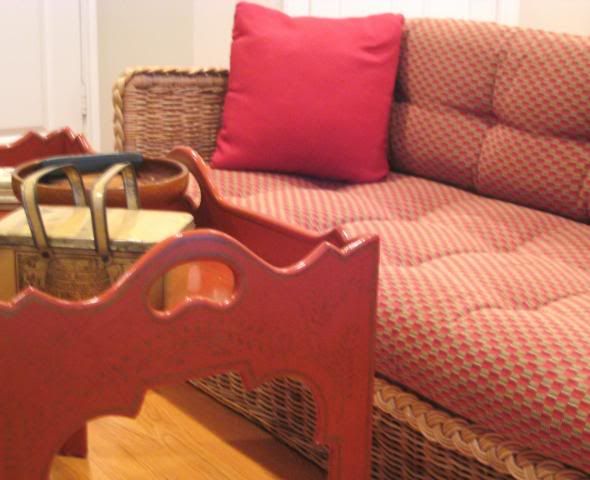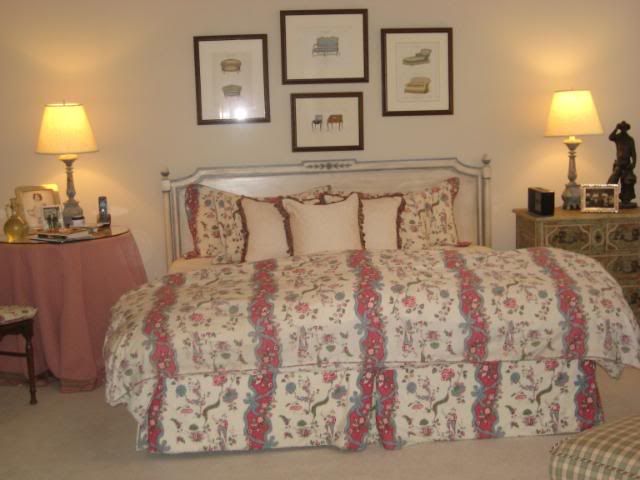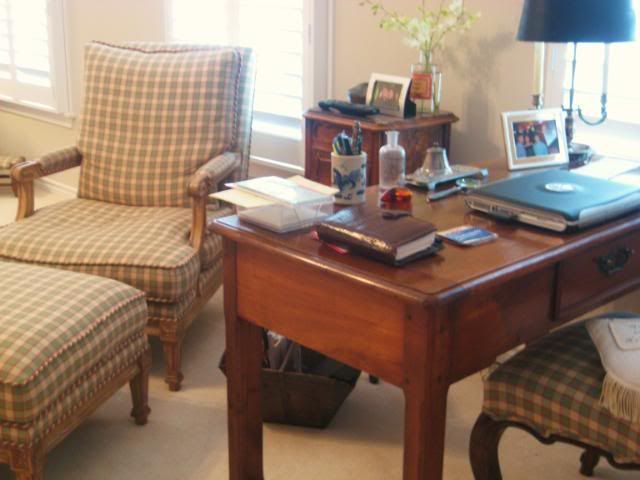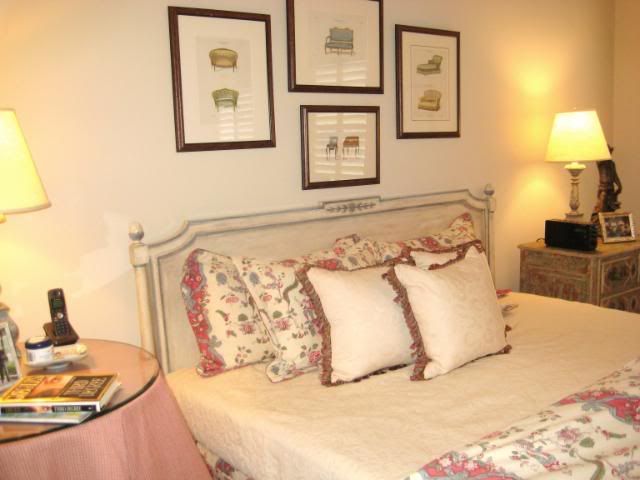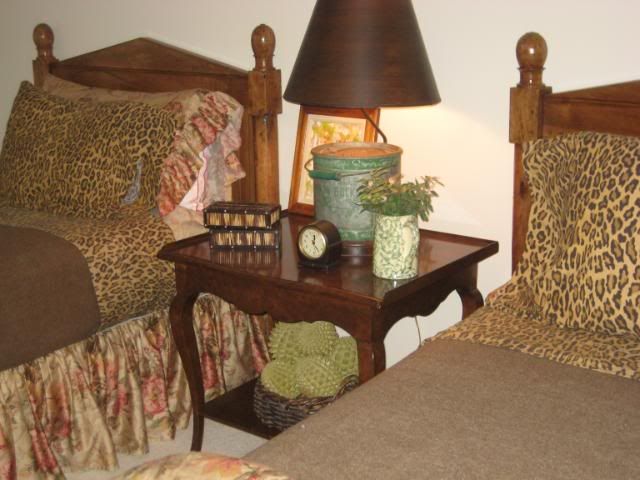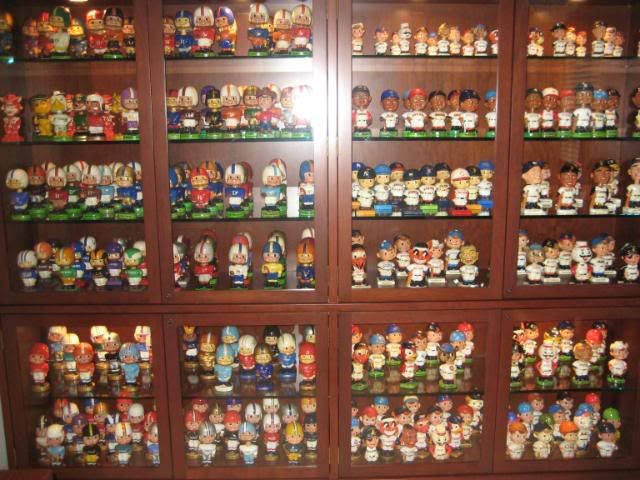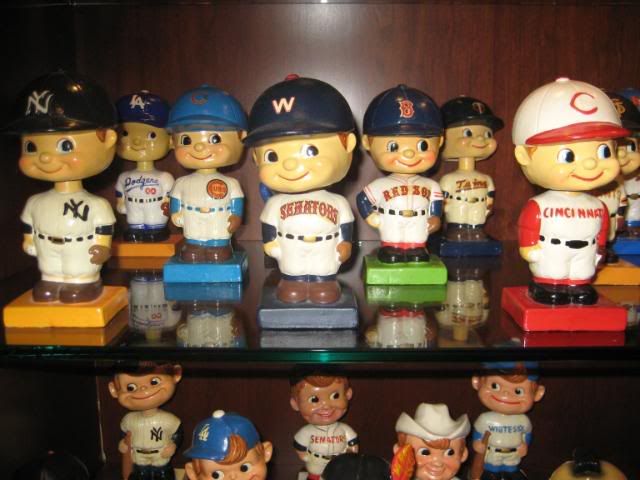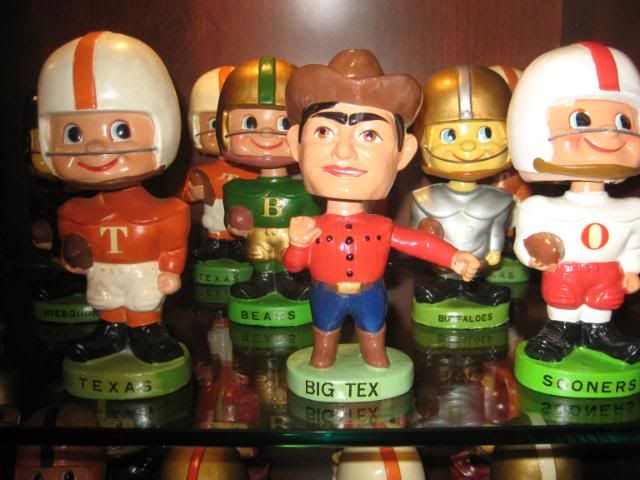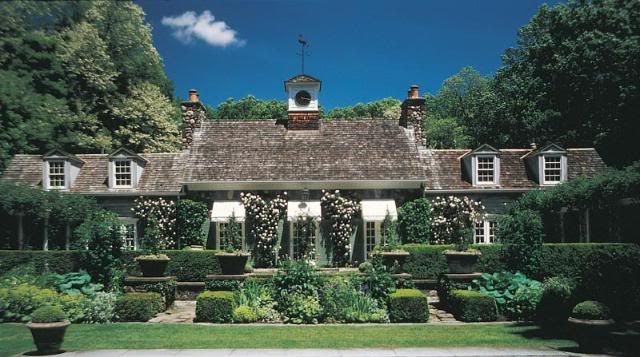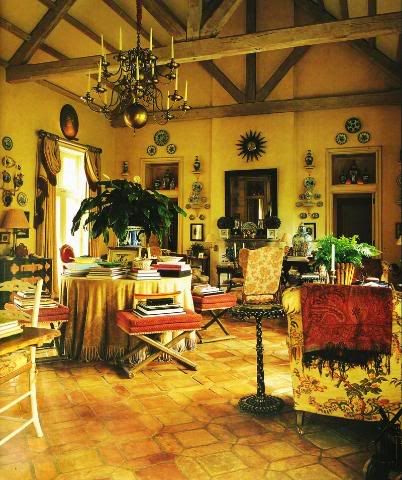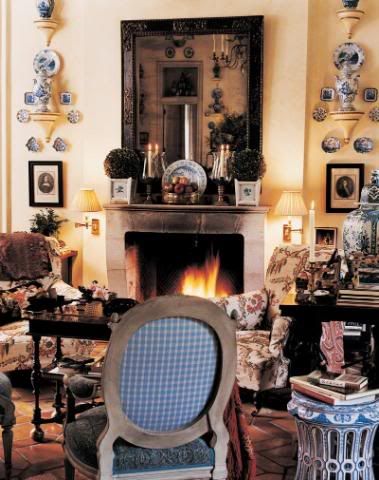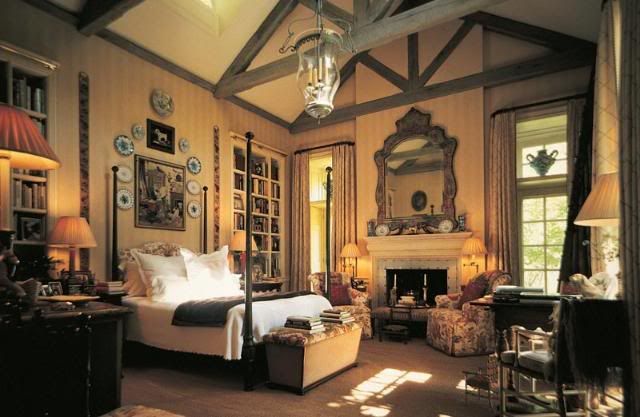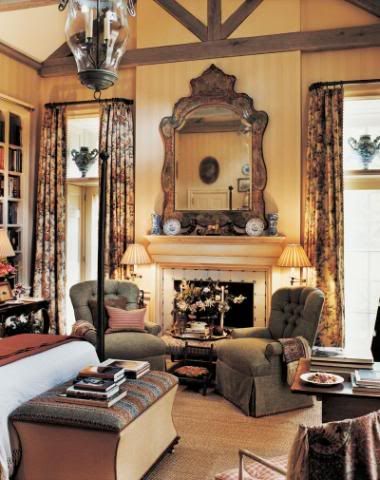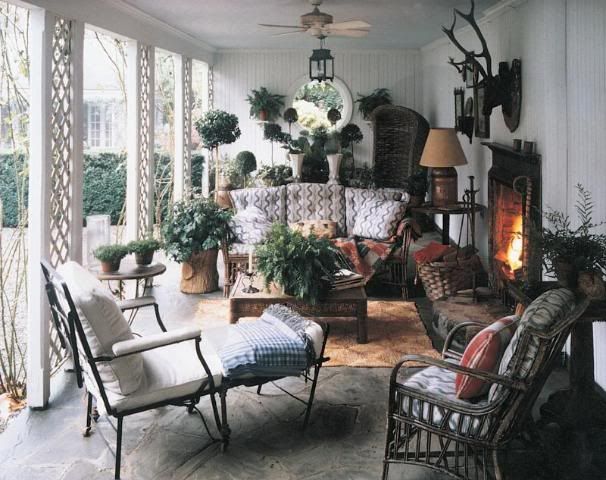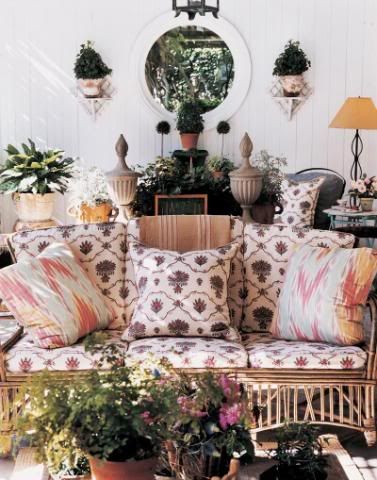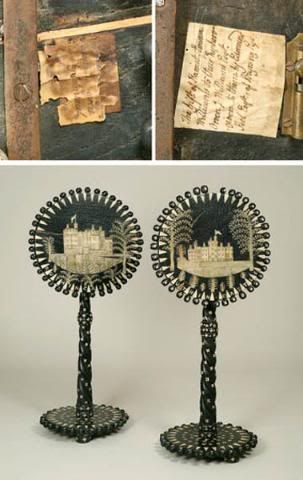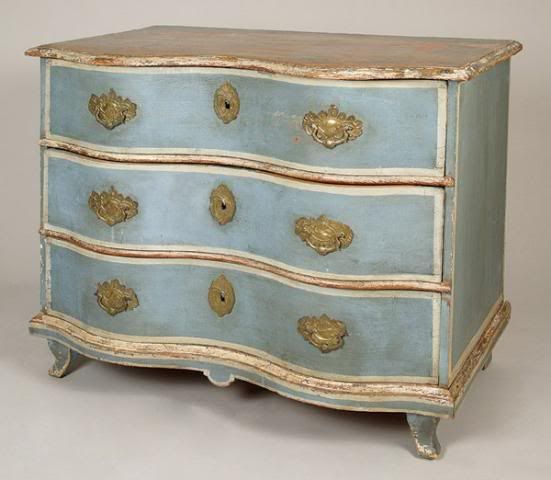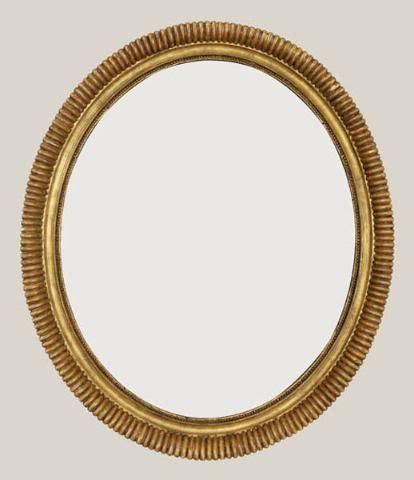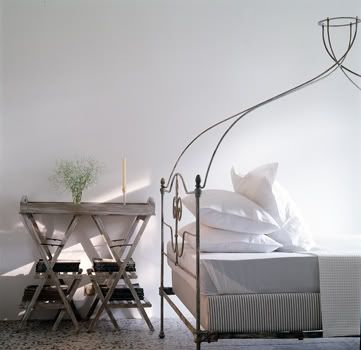
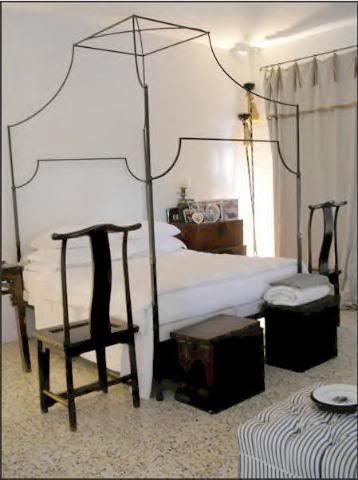
1. Ms. O'Connell - tell us something about your background - where you were born, where you grew up, where you went to school?
2. How did you get started in the design business?
To make my Bank Manager happy! - I was always short of money. I showed a certain talent doing up my houses and people used to say: you should do this professionally and get paid! I've always been very disciplined, blessed with extraordinary energy and loved, loved dearly what became my profession! Designing houses is not puffing up cushions!! You have to visualize finished rooms, be patient with workers and clients and keep in mind that you are a service, not a star. Humility and a sense of humor have helped a lot along these years!! I looked at houses, palaces, cathedrals, farms all my life, wherever I've been visiting. Places have inspired me and traveling has helped a lot.
3. Who are those in the business that inspired you early in your career?
Pauline Rothschild, the American wife of Philip Rothschild, had the best taste I can remember. All the grand houses in England and Ireland with fabulous furniture, never pompous and then the Far East: China with the purity of the Ming style, the beginning of minimalism. Always Bali, from the magic of the island 30 years ago with the perfection of their bamboo houses to the sophistication and today's grandeur of the Aman Resorts: the huge hall of the Amanusa with scented baskets of tuberose flowers and the impeccable, exquisite style of the Amankila, the best hotel on a beach I have ever seen.4. Tell us about your company Port of Call! What gave you the idea to import oriental furniture? What were the obstacles, what were the successes?
I lived and worked in Hong Kong in the '90s for 2 years and, when I came back to London, I started Port of Call. (note: the company Port of Call was started in 1975, the gallery opened in 1994) That was the beginning. The shop was pretty, different and people liked it. I did not realize I was starting a serious trend!! Port of Call has been a very successful shop and a very successful company, sophisticated, yet simple and the eclectic mixture of furniture did and does work very well! There have been no obstacles, just a lot of people copying, taking and making my ideas more commercial along these years. I sold Port of Call gallery and company in 2006. I go on working as a Design Consultant and I am very busy.5. You have such a wonderful and defined design sensibility. Your choices of fabrics, your use of antiques and iron furniture, the oriental accents --- did you always favor interiors with these elements?
I always loved fabrics, textures and red color. There are a hundred shades of white and a hundred shades of red to choose from if you want to be difficult. Gray and black are divine only when their quality is perfect. I love velvet silks and Fortuny fabrics from Venice, French silks from Lyon, marvelous embroidered Ottoman textiles, Irish linen. I am, sometimes, extravagant in the lining. I want the inside as chic and precious as the cover. That is why I use the striped cottons a lot. I never, never use lining as such. Iron furniture taste comes from my childhood in the Italian countryside. We always slept in fabulous iron beds. I love them, you can dress them up or leave just the frames. They are chic to die for!!
6. What do you think of the younger generation turning to mid century modern design and retro?
A lot of people are turning to mid century design, but it is not my idea of simple luxury!! There is an incredible freedom of choices in today's design.
7. After great success in Europe and England, do you care about conquering America too?
I always loved U.S.A.! How can you not be overwhelmed by the mineral beauty of New York, by the real perfect deco of South Beach in Miami?, by the chic of your flag?! I loved New Orleans as it was. Your south is divine and you all marvelous people! Of course I would love to work in America!
8. And lastly, what do you see in the future for you and your interior design business?
To be a Consultant to some super projects bringing new ideas and a different soul wherever is requested.
 The beautiful, fun loving and energetic designer.
The beautiful, fun loving and energetic designer."The World According To Mimmi"
- Fireplaces wherever possible with logs in large country baskets.
- Pure and dramatic benches in precious woods from Northern China to sit on.
- Candles, candles, candles at night mysterious and sensuous lighting!
- Oversized tables somewhere full of books or clean, as sculptures.
- I like bedrooms, with impeccably crisp white linen. Lots of pillows piled up and no bedspreads. They can look sober and innocent! I will always fit double beds in small guest bedrooms. They are comfortable, even when there is little space left for anything else.
- I like wonderful, simple curtains with tape borders, bias borders, unlined or the most extravagant, rich, voluptuous layers, always spectacular! I like them flirting with light and shadows. Curtains have become a signature in a lot of places I have decorated.
- Books in large oversized bookshelves along walls.
- Kitchens that are kitchens, not metallic displays, where it is wonderful to cook and eat casually. Meals should always be a sensuous and fun occasion to gather friends sharing the pleasure of food.
- Outdoor furniture used indoors: folding old garden chairs that make serious furniture looking bearable and less pompous. Wonderful Javanese teak tables and chairs. They all look good indoors.
- Flowers: only one colour and really tight together: all red, all purple, all white, all yellow!
- Fabrics: from crisp linen and cottons to the most extravagant silks from Claremont in London. I buy textiles wherever I travel: batiks in Java, old silks in Bangkok, silk velvets in Venice and in Como, old precious textiles at London specialised fairs. The romance with fabrics and textures has been a long faithful affair throughout my life!

Upholstered twin beds in Italy. Chairs serve as night tables to hold piles of books that Mimmi loves.
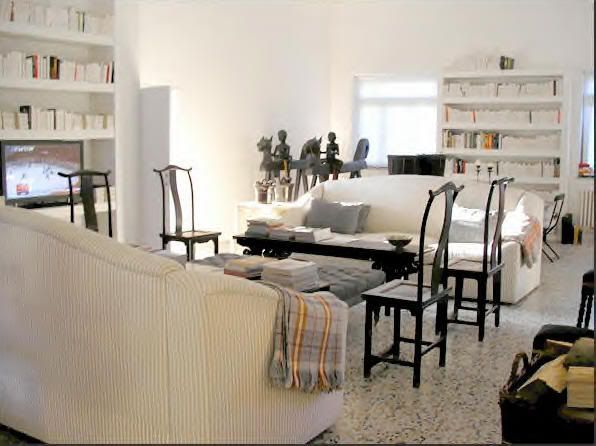
The villa in Tuscany with its comfortable and inviting living room filled Mimmi's favorite books, and a basket filled with wood awaiting a fire.
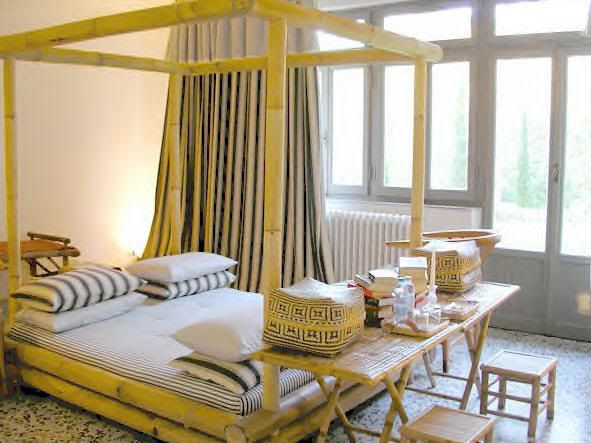
A departure from the iron bed: bamboo. Black and white ticking.
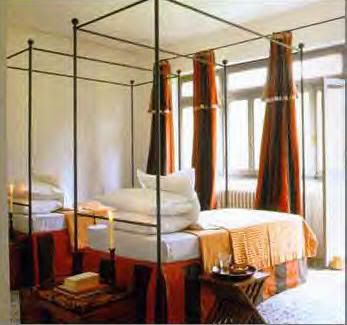
Orange and black guest room in Italy. Mimmi's candles are an important element to her.
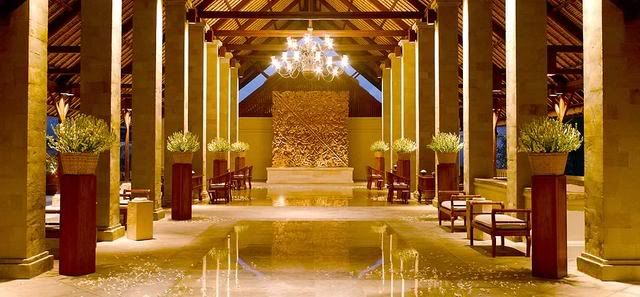
The great hall filled with tuberoses at the Bali Hotel: Amanusa. One of Mimmi's favorites.

Mimmi's favorite beach resort: In Bali, the Amankila
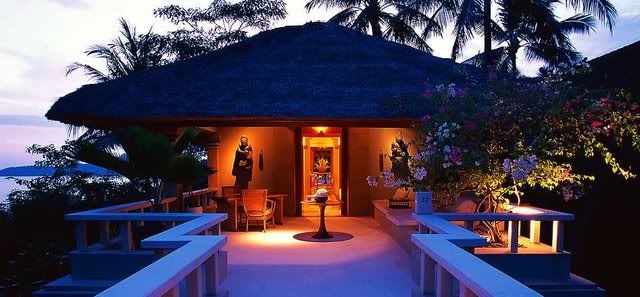
Entrance to the bedroom suites at the Amankila.
